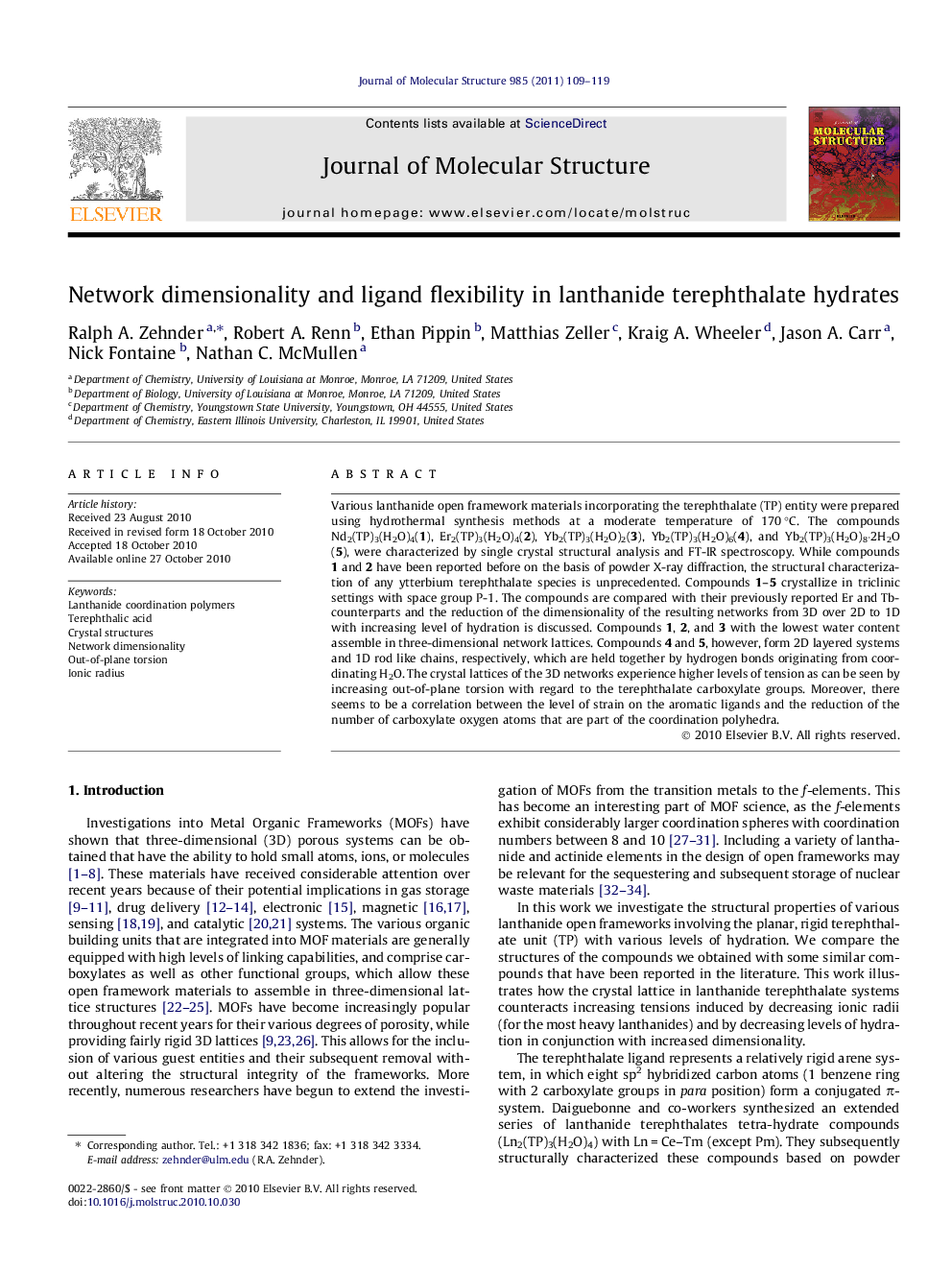| Article ID | Journal | Published Year | Pages | File Type |
|---|---|---|---|---|
| 1410747 | Journal of Molecular Structure | 2011 | 11 Pages |
Various lanthanide open framework materials incorporating the terephthalate (TP) entity were prepared using hydrothermal synthesis methods at a moderate temperature of 170 °C. The compounds Nd2(TP)3(H2O)4(1), Er2(TP)3(H2O)4(2), Yb2(TP)3(H2O)2(3), Yb2(TP)3(H2O)6(4), and Yb2(TP)3(H2O)8·2H2O (5), were characterized by single crystal structural analysis and FT-IR spectroscopy. While compounds 1 and 2 have been reported before on the basis of powder X-ray diffraction, the structural characterization of any ytterbium terephthalate species is unprecedented. Compounds 1–5 crystallize in triclinic settings with space group P-1. The compounds are compared with their previously reported Er and Tb-counterparts and the reduction of the dimensionality of the resulting networks from 3D over 2D to 1D with increasing level of hydration is discussed. Compounds 1, 2, and 3 with the lowest water content assemble in three-dimensional network lattices. Compounds 4 and 5, however, form 2D layered systems and 1D rod like chains, respectively, which are held together by hydrogen bonds originating from coordinating H2O. The crystal lattices of the 3D networks experience higher levels of tension as can be seen by increasing out-of-plane torsion with regard to the terephthalate carboxylate groups. Moreover, there seems to be a correlation between the level of strain on the aromatic ligands and the reduction of the number of carboxylate oxygen atoms that are part of the coordination polyhedra.
